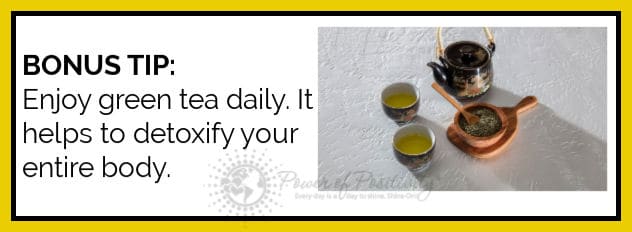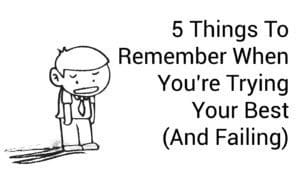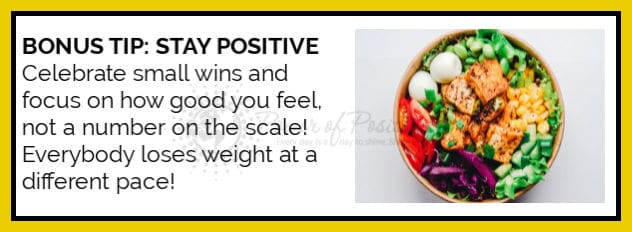Just in case you haven’t noticed: your mind is an incessant chatterbox. You might feel that you are thinking too much, perhaps even depriving yourself of sleep. Estimates regarding how many thoughts we have are various. Some estimates place the number of times we think daily at 12,000, 15,000 on the low end, or even as high as 50,000 to 70,000.
There exists much debate as to the accuracy of these numbers. For apparent reasons, it is impossible to quantify or place a number on something as abstract as ‘thoughts.’ Few people will argue that thinking a little less would be nice.
The good news is that, while we can’t stop thoughts, we can slow them down drastically. Contemplatives have been doing so for centuries. But you needn’t be a Buddhist monk or live in an ashram to slow down your thinking.
This article will provide a simple 4-step method of slowing down those racing thoughts. It is vital to know how the brain produces ideas – if not only for your sanity. This knowledge alone may make it easier to relax – and thus, have fewer thoughts.
Let’s get to it!
Why do we think so much?

“The human brain has 100 billion neurons, each neuron connected to 10 thousand other neurons. Sitting on your shoulders is the most complicated object in the known universe.”
~ Michio Kaku, theoretical physicist
We, humans, are head and shoulders above the intellect of any animal. One need only look at the accomplishments of humankind for this fact to become crystal clear. However marvelous the human mind may be, it’s the sole source of all our misery.
No honest scientist can answer the question, “What is a thought?” They don’t know. The only thing that we know is that all of us have them. But we do know a few things about the human brain. For example:
– It contains nearly 100 billion neurons (‘brain cells’). Each of these cells connects to another 10 thousand neurons.
– There are trillions of neural connections within the brain.
– Thinking correlates with certain parts of the brain, most of which sit in the outer part of the brain, the cortex.
– The frontal lobe is responsible for complex thinking tasks, including reasoning, planning, voluntary movement, and some speech. It resides under the forehead.
Michio Kaku, the man quoted above, is one of the world’s most respected theoretical physicists (Einstein’s line of work). Theoretical physics is an extraordinarily complicated field that “employs mathematical models and abstractions of physical objects to rationalize, explain, and predict natural phenomena.”
But, according to Kaku, it’s not the most complicated. Not even close. What is? The brain.
The Intricacy of the Human Brain
To put it mildly, the human brain is inconceivably intricate. Neuroscientists and other experts freely admit that we are in the dark about how the brain works. This unclarity includes how we think.
One of the things that we know is that a bunch of areas of the brain are associated with an activity that is always on. Scientists call these parts the default mode network or DMN. Links occur between DMN activity and mental disorders–depression, anxiety, and schizophrenia.
In short, the intricate connections across all brain areas have much to do with why we think so much. To say nothing of the more primordial structures of the brain such as the amygdala and medulla, which keep us in an “always-ready” mode. Little doubt that habitual thinking is influenced by these areas as well.
Internal and External Distractions
“…information consumes the attention of its recipients. Hence, a wealth of information creates a poverty of attention.” Herbert Simon, Nobel Prize-winning Economist We, humans, have rather poor attention spans. Even before the massive influx of mobile gadgets, humans have struggled to maintain their focus on anything. The former sparked an enormous research effort in the mid-2000s to determine if attention had “shrunk.” Fortunately, this turned out not to be the case.
Instead, the inherent structure of the brain is to “blame” for our limited attention skills. The brain circuits responsible for focusing attention always face a “pull” from internal and external distractions.
Internal distractions are those that originate from our bodies and minds. For example, anxiety, boredom, and tension. External distractions are those that stem from elsewhere. These include outside noises from people and events.
In his book Focus, The Hidden Driver of Excellence, Daniel Goleman puts internal distractions into two categories: sensory and emotional. Goleman adds: “The sensory distractors are easy … Your brain weeds out the continuous wash of background sounds, shapes and colors, tastes, smells, sensations, and on and on.”
The emotional distractors? Well, those aren’t so easy. “More daunting is the second variety of lures: emotionally loaded signals,” Goleman says. Even the most focused individuals, Goleman continues, have difficulty sustaining attention during “the emotional turmoil of our lives.”
4 Steps to Stop Thinking (If You Can’t)

“Thinking has become a disease. Disease happens when things get out of balance.”~ Eckhart Tolle
First and foremost, we must understand one crucial thing about stopping thinking: we can not force it to happen. Need proof?
Try to not think of a pink elephant in your mind’s eye. Sit quietly for the next five minutes and try not to think of a pink elephant.
If you’re anything like 99.999% of humans, one of the first things that you think of is a pink elephant. Why? Because of the power of suggestion. Your brain’s structure and function are designed to create novel mental images (such as a pink elephant.)
Again, stopping or slowing down thinking has nothing to do with willpower. It is this willpower that gets us into trouble in the first place. We cannot force the mind to do something it doesn’t want to do.
However, we can train the mind. It’s not easy, but we can do it. And we should.
Here are four steps to help you stop overthinking:
1 – Relax
No, we’re not kidding. Mental and physical tension is a slippery slope to negativity and fruitless thinking. Before you can even get a whiff of what it’s like not to think, you must bring your body and mind to a state of ease.
The Relaxation Response, an empirical method to counteract the “fight or flight” mechanism of the brain, is an effective way to initiate relaxation.
Here is how to elicit the Relaxation Response:
1) Sit in a quiet, comfortable place
2) Close your eyes or leave them just slightly open
3) Progressively relax all muscles of the body, starting with the feet, upwards to the head
4) Count your breaths. Silently say “one” on the inhale and “one on the exhale; “two” on the next inhale and “two” on the next exhale. Do this to a count of ten and start again.
5) Practice for 10 to 20 minutes. Remain seated for a few minutes as your mind and body adjust.
2 – Practice acceptance
Acceptance is crucial to slow down thinking. What is acceptance? It is the removal of aversion. Aversion is the mind’s constant need for things to be different than they are in the present moment.
When we want things to be different than they are, we often contemplate our current situation. Actually, ‘contemplate’ is too sweet of a word. We ruminate. We can’t stop thinking about how we wish for things to be different.
Practicing acceptance, while a simple concept, is compelling. In a study published in the Journal of Dual Diagnosis, participants with depressive symptoms who undertook a three-month Acceptance and Commitment Therapy (ACT) course “had higher quiet rates and lower depressive symptoms” than other non-study participants.
How do you practice acceptance? By actually perceiving and acknowledging your thoughts, feelings, and emotions. In other words, not running away from things. Again, pretty simple – but not easy.
3 – Manage and train your attention
Too often, we allow our attention to be pushed and pulled around by internal and external influences. It is crucial that we systematically eliminate these influences. This is called managing your attention – and it is essential.
Here, again, we cannot force the mind to do anything. But every one of us can choose to rid ourselves of the things that threaten to hijack our focus. “Concentration requires a kind of relaxed attention,” says Mark Ashton Smith, a cognitive neuroscientist at the University of Essex, “not one that is over-controlling.”
We train our attention by engaging in activities that strengthen our base level of concentration. Perhaps the best attention training platform is focused attention meditation or FAM.
FAM involves choosing an ‘anchor’ of attention, usually your breath or a mantra, and focusing on it single-pointedly. Whenever you notice that your attention has wandered, gently bring it back to the anchor. (Notice the word gently. Do not be harsh with yourself.)
 4 – Begin again
4 – Begin again
We’ll keep this last one short. It is human nature to want to strive to “achieve” something, even if it’s slowing down your thinking. What we need to do now is to let things progress naturally. Stop the business of striving.
When you fall short in these practices, dare to begin again. Training your mind to stop thinking is tough work. Your mind will, no doubt, try and derail your efforts.Don’t allow that. Simply begin again.













